Kurama-dera|鞍馬寺
Overview

Located in the northern part of Kyoto, Kurama-dera is known for its spirituality and its breathtaking natural beauty, something that has been fostered in Kurama for ages. The temple itself has a history from the year 770, and each season the temple shows visitors a different face. Whether you take the cable car or hike up the mountain, you’re surrounded by verdant mountain forests where you may be able to spot some of the local wildlife. The temple’s main hall offers a gorgeous view out over the surrounding mountains, and a sandō path connects it to the nearby Kibune village and Kifune Shrine. Mt. Kurama is also believed to be the birthplace of reiki, a type of “energy therapy” which utilizes spiritual elements. Tengu, long-nosed or beaked creatures believed to be the guardians of the mountain, can be found as statues, art, and goods in the village and in the temple complex.
The Kurama school teaches that life is guided by Kannon’s mercy, Bishamonten’s truth, and Maōson’s energy in the form of the supreme trinity Sonten.
Features
Tengu
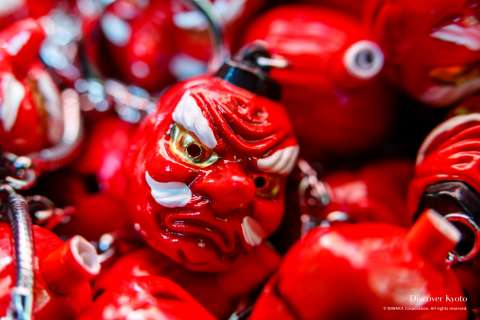
One thing you will notice about Kurama is that you can find many tengu in the area. Tengu are long-nosed legendary creatures found in Japanese folk stories that represented to ancient people the mysterious power of mountains. There is a lot of tengu imagery visible around Kurama because legend states that they once lived in the area. It is also mentioned in the tales of historical figure Minamoto no Yoshitsune that he endured harsh training with Sōjōbō, the lord of the tengu. You can find a large statue of a tengu’s face at Kurama Station, and you can also take this creature home by buying some tengu-shaped omikuji at Yuki Shrine.
A-Un Tigers
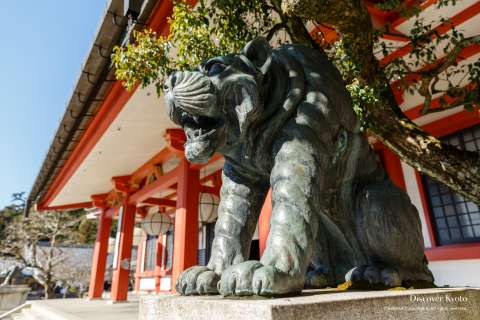
Tigers are considered to be messengers of the Buddhist divinity Bishamonten, one of the Four Heavenly Kings and the protector of northern Kyoto. According to legend, Bishamonten came to Kurama with a tiger in the Hour of the Tiger, on the Day of the Tiger, within the Month of the Tiger according to the Chinese lunar calendar. Called “the tigers of A-Un”, the concept of A-Un is one that encapsulates all of life from its beginning to its end, represented by the first and last sounds of the Sanskrit alphabet. As you make your way through Kurama, you will notice a pair of tiger statues standing tall and proud on either side of the main hall, on the temple’s votive tablets, and in other imagery.
Yuki Shrine

Yuki Shrine was founded in 940 and, despite being a small shrine, it is full of charm. Though separate from Kurama-dera, it is located on the way up the mountain to the temple. On the grounds is a towering Japanese cedar tree which is about 800 years old and 53 meters high. It is believed that if you pray to the tree with all your heart, your wish will come true. At Yuki Shrine you will also find some lion dogs carved from stone.
Guardian pairs of lion dogs are common at shrines, but one of these dogs is depicted holding its child, a form rarely seen in other locations. This type of statue is believed to be a symbol for healthy babies. Tengu imagery can also be found in the form of omikuji, with Yuki Shrine selling keychains in the shape of a tengu’s head that contains a fortune.
Main Hall

Kurama-dera was a part of the Tendai sect of Buddhism, but in 1949 it became part of the newly founded Kurama-Kokyo sect as its headquarters. The temple worships Sonten, who is believed to be the creator of the universe. Sonten is a trinity composed of Maōson, Bishamonten and Senjū Kannon (Thousand-armed Kannon), who have statues in the main hall for worship.
Kongoshō Six-Pointed Star
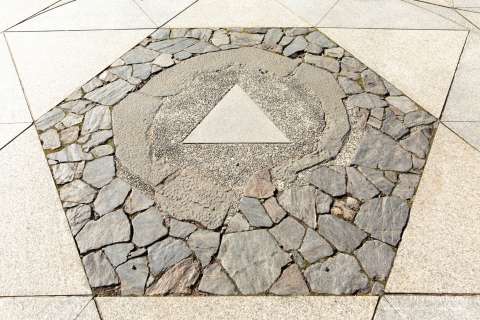
The top of Mt. Kurama is known as a very powerful spiritual spot. In front of the main hall you will see a star symbol on the ground called the Kongoshō. With the Sonten trinity represented by the triangle, the six points radiating outward are said to stand for the six ways in which we sense and interact with the world around us as detailed in the Lotus Sutra: the eyes, ears, nose, mouth, body, and heart. It is believed that if you stand on the triangle stone in the center of the innermost star and face the main hall you will be able to feel a surge of energy, becoming able to realize the innate power held within you.
Maō-den Inner Sanctuary
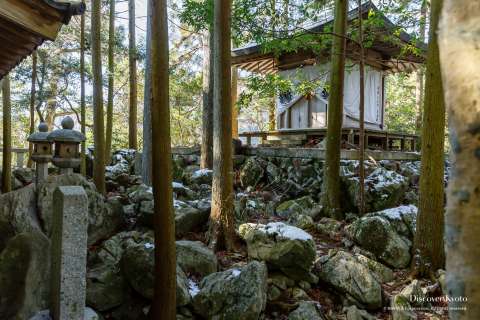
On the hiking trail, the sandō path between the temple and Kibune Village, you will find another spiritual spot called the Maō-den. The Maō Hall is dedicated to Maōson (also referred to as Gohōmaōson), a deity said to have descended to Earth from Venus some six million years ago.
Cable Car
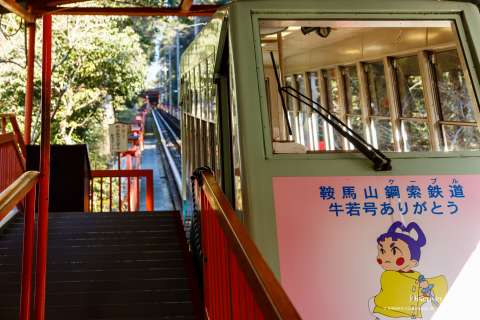
Although climbing Kurama on foot is a great experience on its own, if you want to sit down and enjoy the scenery the Mount Kurama Cable Railway is a great alternative. The car operating on this funicular line, the Ushiwakamaru, is named for the childhood moniker of the great general Minamoto no Yoshitsune, who was raised on this mountain. The cable car station is located just inside the temple's sanmon gate, in the Fumyōden building, and a one way ticket only costs 200 yen (100 yen for children up to junior high school age). The ticket, which is in the shape of a flower petal, also comes in different colors and has a message written across it. The trip saves you a trek, but it's only a few minutes long, so make sure you don’t miss out on your photo opportunity!
Hiking

One of the noteworthy points about Kurama Temple is that there is a sandō (sacred path to a shrine/temple) that connects the mountain to the beautiful Kibune, a mountain village famous for its shrine and its unique riverside dining experience.
The hike from the bottom of Kurama Temple takes about an hour and a half, but if you want to stop, enjoy the scenery and take a few snaps along the way, it might last you a good two hours or more. The mountain trail has a mysterious atmosphere with its giant Japanese cedars, exposed tree roots, wild animals, interestingly-shaped wisteria trees and small shrines along the way. Kurama-dera wants those who visit to take the time to appreciate the nature heaven has granted us, and encourages people to ponder their wishes and place in the world along this path through the mountains.
History
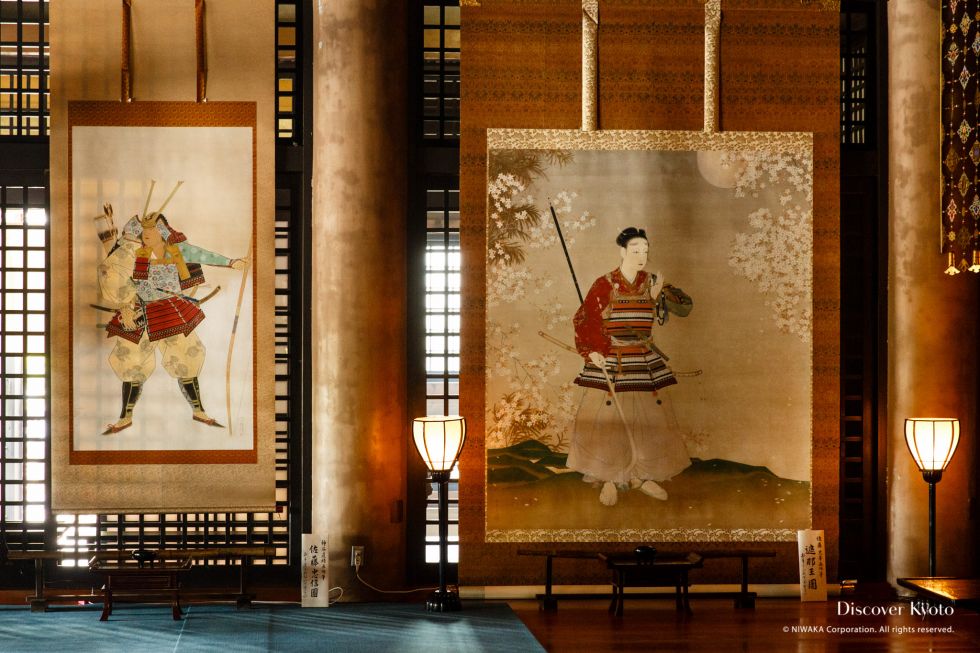
Kurama-dera traces its history back to the year 770 as detailed in an ancient account preserved at the temple called the Anbagai-ji Engi. In these records it is written that the Chinese monk Ganchō, disciple of the famous Jianzhen (known as Ganjin in Japan), resided at his masters temple, Tōshōdai-ji, even after his death. However, on a certain day he beheld a dream in which he was instructed to go to the north where a large amount of spiritual power was concentrated and tengu and mountain spirits were said to dwell. When making his way there Ganchō became hopelessly lost until the god Kibune Myōjin appeared in a dream and instructed him to look to the sky in the east the next morning to behold a miracle. When he did so, the monk was shocked to see a white horse wearing an empty saddle, and he followed that horse until he arrived on the mountain that would then be called Mt. Kurama, spelled with the kanji characters for “horse” and “saddle”. There Ganchō set up a camp, but he was soon set upon by a female oni intent on devouring him. The monk tussled with the demon and fled from her, seeking refuge in a hollowed tree where he began praying for salvation. In answer, the Guardian of the North, Bishamonten, exterminated the demon. In thanks to Bishamonten, Ganchō established a small hermitage on the site in order to strive for Enlightenment and worship the Heavenly King.
When the capital moved from Nara to Kyoto in 794 many nobles and courtiers came with it, and one man, Fujiwara Issendo, a member of an immensely powerful clan and associated with construction of the Tō-ji temple in southern Kyoto, sponsored construction of a proper temple on Mt. Kurama two years later after seeing a vision of the Thousand Arms Kannon. The Fujiwara family often enshrined the Goddess of Compassion, Kannon, in the temples they sponsored, so Kurama-dera came to worship both of the divinities, eventually becoming a Tendai sect temple. Over the years the complex suffered several fires and was burned down then rebuilt, but each time the treasures and Buddhist statuary were successfully rescued and returned to new homes.
One of the most famous historical legends of the Heian period, the story of the Heike Rebellion, involves Kurama-dera. The temple was the place where Minamoto no Yoshitsune (1159-1189), the young son of the assassinated lord of the Minamoto clan, was placed by his father’s political rivals, the Taira clan, to grow up as a monk instead of a warrior who would later be able to oppose them. It is told that in spite of their intent to make a monk of him, Yoshitsune snuck off into the mountain forests and was trained by the king of the tengu in swordsmanship before leaving monastic life to reclaim his family’s honor and take revenge on the Taira alongside his brothers.
Kurama-dera changed sect allegiance multiple times throughout the centuries until Abbot Shigaraki Kōun established the Kurama-kōkyō (Kurama School) of Buddhism in 1947. With the various training methods and styles of nature worship represented at Kurama-dera making it quite different from other established schools, it became independent from the Tendai sect in 1949. Upon the founding of this new sect they introduced the formation of a Trinity known as Sonten composed of Bishamonten, Kannon, and the esoteric deity worshiped only at Kurama-dera called Gohōmaōson. The Kurama school teaches that life is guided by Kannon’s mercy, Bishamonten’s truth, and Maōson’s energy in the form of the supreme trinity Sonten.
Events
January | Prayers on the First Day of the Tiger (Hatsu-tora Taisai) |
|---|---|
February 3rd | Setsubun Tsuina shiki |
April | Hana Kuyō |
May | May Full Moon Festival (Uesaki-sai) |
June 20th, 14:00 | Bamboo Cutting Ritual (Takekiri-e Shiki) |
August | Nyohō Shakkyō-e |
September 15th | Yoshitsune-sai |
October | Fall Festival (Aki no Taisai) |
November | Heiwa no Inori |
December | Dedication of Old Amulets on the Last Day of the Tiger (Osame no Tora) |
Access
Address
〒601-1111 京都府京都市 左京区鞍馬本町1074
| TEL | 075-741-2003 |
| WEB | http://www.kuramadera.or.jp/ |
Admission
- General Admission: ¥200
- Junior High School & Below: Free
Hours
- General Admission: 09:00 – 16:30
- Closed: No closing days
Transportation
- By Eizan Train Line ⇒ Ride Eizan Train towards Kurama ⇒ Kurama Station ⇒ 3 minutes walking
- By Keihan Train Line ⇒ Demachiyanagi Station ⇒ Eizan Train Line towards Kurama ⇒ Kurama Station ⇒ 3 minutes walking
Gallery
-

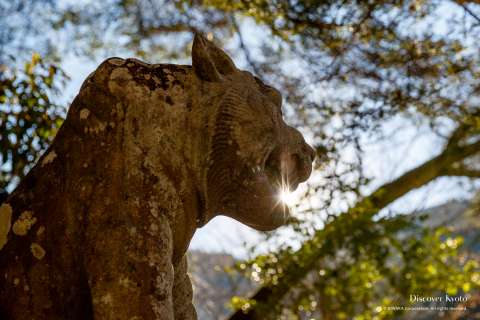

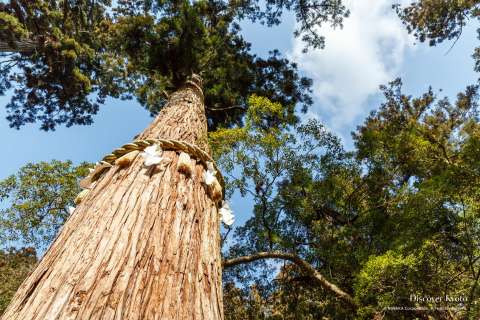
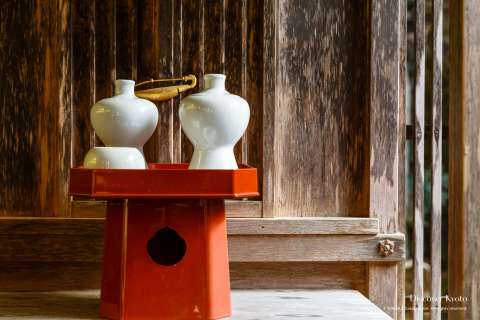 +27
+27
